
|
The TCON-300 Telephoto Attachment for the Olympus E-10 and E-20 |

| My other articles related to the Olympus E-10 and E-20 cameras |
| General information | |
|
TCON-300 is a telephoto attachment lens for the Olympus E-10 and E-20 cameras.
When fitted to the front of the built-in lens, it will enlarge its focal length by a factor of three, i.e., to 108 mm which is equivalent to 420mm/2.8 on a 35-mm film camera. |
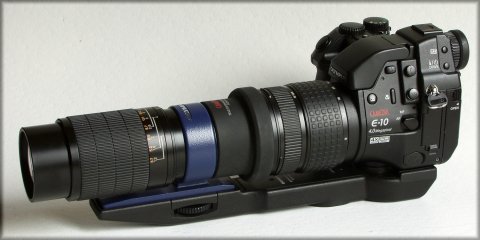
|
|
Size and weight This is a big piece of gear: the total weight (including the support arm) is about 1.1 kg (2.5 lb), and it adds about 18 cm (7") to the total camera/lens length. Attaching the lens hood (included) adds another 5 cm (2"). TCON-300 takes 49-mm screw-on filters. Mounting on the camera The attachment does not have a direct mechanical connection to the lens (thread, bayonet). Instead, it is held immediately in front of the lens by means of a massive, die-cast support arm. First, the TCON-300 has to be attached to that arm by means of a 1/8" screw. After that, the camera itself has to be mounted on the arm using a similar screw and the camera's tripod socket (obviously, any filters have to be removed from the main lens). A number of guiding pins and holes facilitates the process and provides the proper alignment. The rear end of TCON-300 has a rubber collar which goes around the camera's lens, providing a light barrier and some measure of additional mechanical guidance. The whole ensemble is quite rigid and feels solid, but the process is not something you would like to do on the run. Initially I wished for a third hand to make it faster and safer; after a few months I'm slowly getting better at it. As a result, you're getting an ensemble which is about 40 cm (16") long, but quite nicely balanced. The support arm has its own tripod socket, positioned in the right place (i.e., near the center of gravity of the whole set). Optical Olympus was serious when designing the TCON-300. The optical design consists of 10 elements in nine groups. (This is from the instruction booklet; some of the Olympus Web pages say 12 elements in 11 groups, really a sloppy job here!) The main lens has to be set to the maximum focal length (140 mm equivalent), otherwise the image will be vignetted. Actually, you can zoom out just a little before vignetting becomes visible, but just a little. This is important, as it is very easy to touch the main lens zoom ring and zoom out by accident. I wish the main lens had a sliding zoom lock in the outermost position. Without it, a gaffer tape may help. Amazingly, TCON-300 causes a light loss of only 1/2 EV. This means that your 140 mm, F/2.4 lens (at the long end) becomes a 420 mm, F/2.8 telephoto. (A behind-the-lens teleconverter, like ones used in most 35-mm SLRs, would cause a loss of more than 3 EV, bringing the effective lens aperture to F/7.2; quite a difference!) Focusing range In order to bring the minimum focusing range down, TCON-300 provides a pre-focusing option. You may set the maximum subject distance with a separate ring, and then the minimum distance will also change accordingly. (The focusing is still done by the main lens.) A scale on the lens barrel provides information on the available subject range for three different presets:
Mind it: although just three maximum distance values are shown, the adjustment is continuous. I haven't verified the data by measurement (it was translated from the Olympus Web site in Japanese) but the numbers look reasonable and have no reason to doubt them. Again, I found it too easy to change the maximum focus setting by accident; I wish there were some clicks at the three marked positions. On the other hand, sometimes find myself using the range ring as a manual pre-focus, letting the built-in AF circuitry to do the rest. The E-10 AF system, by the way, leaves some to be desired, when working with TCON-300. Sometimes it will snap into focus right away), sometimes it will just give up on the same subject, requiring a manual help. The "blinking icon" setting revealed It is recommended that you have the focus/macro setting on the camera in the blinking lens icon position when using the TCON-300. Other attachments require it to be at the non-blinking lens symbol. What's the difference? I found the answer at the Japanese Olympus Web site (thanks, AltaVista, for the BabelFish translation engine!). It turns out that the setting disables the active (infrared) pre-focus, switches the circuitry into the continuous focus mode (no separate "macro" range) and, additionally, informs the circuitry that the lens aperture is 0.5 EV (more exactly: 0.45 EV) smaller. The last function (not present or needed in the other attachment mode, i.e., the one with non-blinking icon, used for TCON-14B and WCON-08) affects only the camera's knowledge of aperture, but not the actual amount of light reaching the CCD sensor during exposure. In other words, if you forget to change the setting, things still will be fine. Image samples Here are examples showing the effect of using the TCON-300 attachment on the Olympus E-10. All pictures were saved as full-resolution, SHQ (1:2.7 compression) JPEGs. The images at the left were reduced and slightly re-sharpened. The cropped samples at the right (320x240 pixels) were resaved at a very low JPEG compression with no postprocessing at all. When scrutinizing the samples, remember that in an 8x10-inch (20x25 cm) print each of them will be just 1.14" (29 mm) tall, considerably smaller (and sharper) than what you see on the screen. |
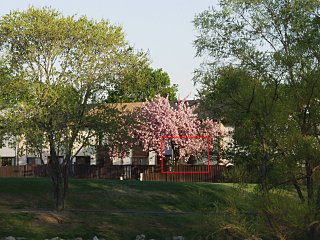
|
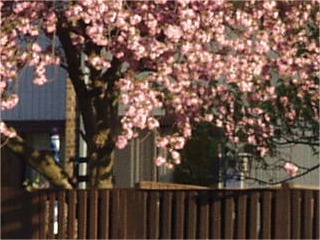
| |
|
Without TCON-300, at F=140 mm, medium tripod
Aperture priority, 1/320s F/4.0 | 1:1 sample from the image at the left | |
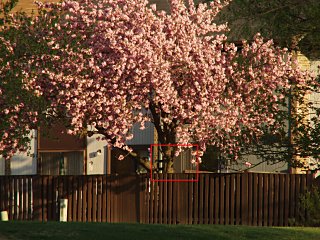
|
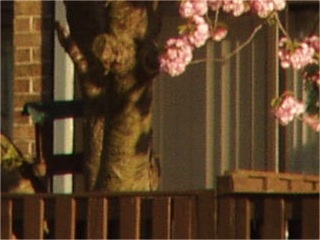
| |
|
With TCON-300, F=420 mm, medium tripod
Aperture priority (-0.7 EV), 1/200 s, F/4.0 | 1:1 sample from the image at the left |
|
In the next example I'm trying to show the performance loss caused by the TCON-300 attachment, as well as the changes in image quality due to aperture used. The left column shows images shot without the attachment, the right column — with. The shooting distance in the first case is three times smaller to show the subject the same size. (All these pictures were saved using the SHQ settings, as 1:2.7 JPEGs, with contrast and sharpness set to "normal".) |
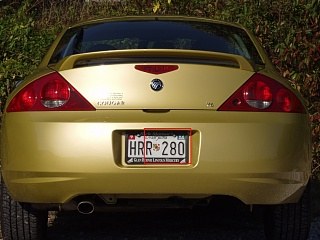
|
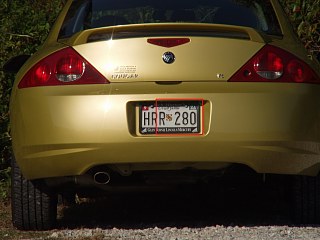
| |
| EFL=140mm, -0.7 EV, 1/250s at F/8.0, tripod; shot from about 8 meters | EFL=420mm, -0.7 EV, 1/200s at F/8.0, tripod; shot from about 24 meters | |
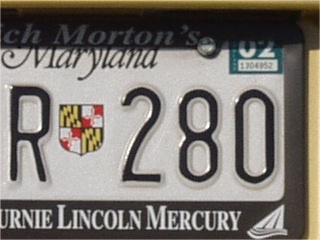
|
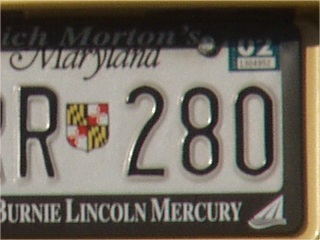
| |
| A straight 1:1 sample from the above | A straight 1:1 sample from the above |
|
Let's face it: putting ten additional pieces of glass in front of an excellent-quality lens has to bring some image degradation. This is clearly seen in the right column. On the other hand, some of the apparent loss seems to be in terms of contrast rather than of sharpness which, although reduced, still remains impressively high. All telephoto lenses tend to be somewhat soft, and nothing will replace walking up closer to the subject. From my experience, in most cases the camera shake, or autofocusing accuracy, not the lens optics, is the limiting factor. Surprisingly, opening the aperture up to F/2.8 does not seem to bring any further degradation (with or without the attachment). Some of my test samples (not shown) seem more contrasty and sharper at F/2.8 than at F/8! To see what we gain by using the TCON-300, here is a picture taken without the attachment from the same distance as those with it (i.e., the right column above). The sample at the right was resized by a factor of 3x in Corel Photo-Paint (a "digital zoom"?) to match the TCON-300 magnification. Compare it with the one directly above it: no contest. |
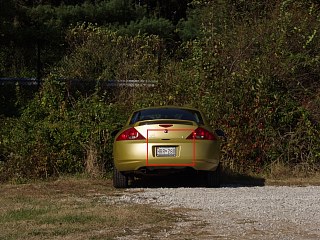
|
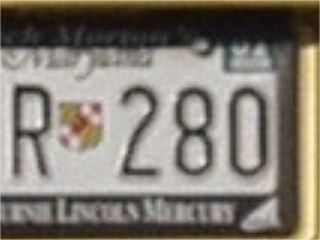
| |
| EFL=140mm, 1/250s at F/8; shot from about 24 meters | Sample from the image at the left, resized by a factor of 3x, to match the one directly above |
|
The bottom line The lens is big and heavy, but with these parameters this is hard to avoid. The construction and finish quality seem high. The mounting is awkward — I'm not sure whether and how this could be improved. The resulting images are quite impressive, although there is a noticeable loss of contrast and sharpness, but this cannot be avoided. I've got some very pleasing pictures from this lens, and also some hopelessly wasted ones (shaken or out of focus). Well, this is a toy for those who know what they're doing, not for point-and-shooters. And the price is right. The least expensive 400/2.8 lens I could find, made by Canon, sells for $7650 at B&H. True, this is a prime lens and I would expect it to be optically better than the TCON-300 (at $500 or so) but the optical quality, let me repeat, does not seem to be the bottleneck in most cases, as long as some minimum is met, which certainly is the case here. If you shoot sports or wildlife, the TCON-300 is an excellent investment. Oh, yes, if you combine it with the TCON-14B, you'll get a 600 mm, F/2.8 big, mean mama of a lens; read about it in a separate article. |

| My other articles related to the Olympus E-10 and E-20 cameras |
| Home: wrotniak.net | Search this site | Change font size |
| Posted 2001/04/30; last updated 2002/06/15 | Copyright © 2001-2002 by J. Andrzej Wrotniak |